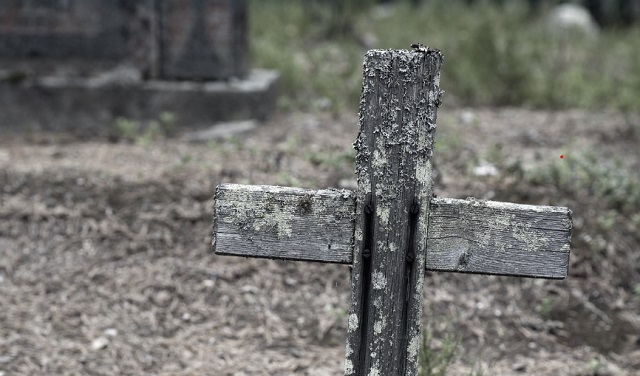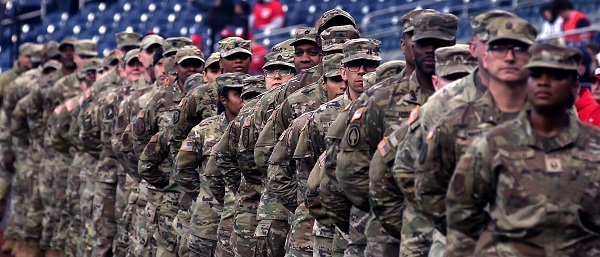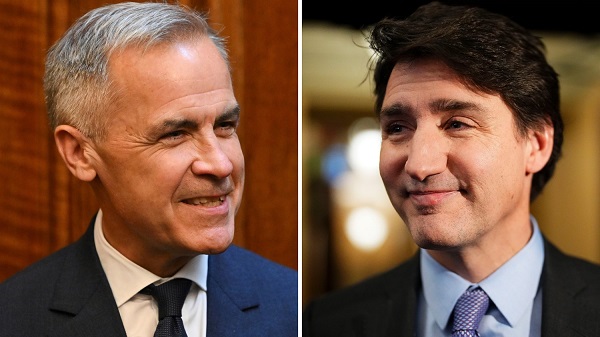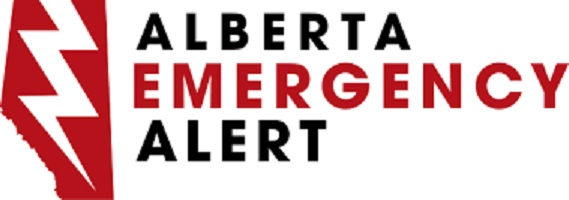Indigenous
Grave Error: Correcting the False Narrative of Canada’s “Missing Children”

Indigenous
Top constitutional lawyer slams Indigenous land ruling as threat to Canadian property rights

From LifeSiteNews
One of Canada’s top constitutional legal experts blasted the push by federal, provincial, and municipal officials for all-encompassing Indigenous “reconciliation,” noting that the reality is all Canadians are and should be equal under the law and no one alive today is responsible for proven historical wrongdoings.
John Carpay, founder and president of the Justice Centre for Constitutional Freedoms (JCCF), noted in a recent commentary published in The Epoch Times that so-called reverse racism against non-Indigenous Canadians is still “racism.”
“Well-intentioned racism, to achieve the vague objective of ‘equity,’ is still racism,” Carpay noted.
“The only sure path to reconciliation, social harmony, and equal opportunity in Canada is the principle of equal rights for all, special privileges for none.”
Carpay noted that “the fact that aboriginal ethnic groups arrived in Canada earlier than other ethnic groups should be completely irrelevant when it comes to the application of the law.”
“Nobody disputes that different aboriginal tribes lived in this land before the arrival of Europeans, Africans, and Asians. The question is: Why should this fact matter?” he noted.
Carpay observed that when officials and courts apply the “law” differently to some “Canadians because of their race, ancestry, ethnicity, or descent,” the predictable and inevitable outcome “is strife, resentment, and fear.”
His comments came in light of a recent court ruling in British Columbia affecting property rights, Cowichan Tribes v. Canada (Attorney General), which saw the provincial Supreme Court rule that decades-long land grants by the government were not valid and violated a land title held by the tribes.
In essence, as noted by Carpay, the court “told the people (of various ethnicities) who live in some parts of Richmond, B.C., that the money they paid for their own properties does not guarantee them the right to own and enjoy their own homes.”
“The court ruled that the land titles system in B.C., which is built on the concept of indefeasible (indestructible) title, cannot be used or relied upon in the face of Cowichan claims. The Musqueam Indian Band and the Tsawwassen First Nation, claiming the same territory, also lost in court,” he stated.
Carpay noted that such a court ruling will only cause more division among Canadians and Indigenous peoples.
“Does anyone seriously believe that this Cowichan court ruling will bring reconciliation between Canadians of aboriginal ancestry and Canadians whose ancestry is Chinese, East Indian, Filipino, Nigerian, German, or English?” he observed.
“Of course not. The only results will be inter-ethnic fear, strife and conflict.”
He then observed what is a fact with land claims, noting, “Is there even one Canadian alive today about whom it could honestly be said that she or he stole land away from aboriginals?”
“Of course not. The court’s legal reasoning is based on inter-generational guilt, whereby people must pay for the sins (real or alleged) of their great-great-great-great-great-great-great-grandfathers. If one were to apply the court’s logic to today’s Germans and Japanese, these two ethnic groups would be forced to pay today for the atrocities that their ancestors committed during World War II,” he stated.
“Every continent features a long history of military, linguistic, cultural, and economic conquests as between different people groups. Would it be a good idea to apply the principle of inter-generational guilt to all of the world’s ethnic groups and countries? If not, then why try it now in Canada?”
Despite the concerns raised by Carpay, some federal politicians want to make it a crime to “deny” still unproven mass grave residential indigenous schools deaths claims.
Carpay warned that defining legal rights based on a person’s “membership in an oppressor’ group or a ‘victim’ group is Marxist.”
“Marxism repudiates the dignity and value of the individual, replacing it with a fixation on groups that are perpetually at war with each other,” he noted.
As reported by LifeSiteNews, new private members’ Bill C-254, An Act To Amend The Criminal Code introduced by New Democrat MP Leah Gazan, looks to give jail time to people who engage in so-called “Denialism.” The bill would look to jail those question the media and government narrative surrounding Canada’s “Indian Residential School system” that there are mass graves despite no evidence to support this claim.
In 2021 and 2022, the mainstream media ran with inflammatory and dubious claims that hundreds of children were buried and disregarded by Catholic priests and nuns who ran some Canadian residential schools. The reality is, after four years, there have been no mass graves discovered at residential schools.
However, as the claims went unfounded, since the spring of 2021, over 120 churches, most of them Catholic, many of them on indigenous lands that serve the local population, have been burned to the ground, vandalized, or defiled in Canada.
Last year, retired Manitoba judge Brian Giesbrecht said Canadians are being “deliberately deceived by their own government” after blasting the former Trudeau government for “actively pursuing” a policy that blames the Catholic Church for the unfounded “deaths and secret burials” of Indigenous children.
Fraser Institute
Courts and governments caused B.C.’s property crisis—they’re not about to fix it

From the Fraser Institute
By Bruce Pardy
In British Columbia, property rights are in turmoil. The B.C. Supreme Court recently declared that Aboriginal title exists on 800 acres of land in Richmond, a suburb of Vancouver. Aboriginal title, said the court, is “senior and prior” to fee simple interests. In the shadow of the decision, given the implications, Aboriginal title claims are receiving more attention. Kamloops and Sun Peaks ski resort are targets in one such claim. Meanwhile, the B.C. government has been conferring Aboriginal title across the province too. It continues to make agreements, such as on Haida Gwaii, to transfer control over land use in the province.
Courts and governments have caused this problem. The framers of Canada’s new constitution, adopted in 1982, excluded rights to private property. But at the last hour, they guaranteed existing Aboriginal rights and title. Over decades, the Supreme Court of Canada has expanded the scope of those rights. The recent decision about Richmond is a culmination of its work. That decision is under appeal, first to the B.C. Court of Appeal. After that, we may find out if the Supreme Court approves. But that could take years.
It’s not just the courts. In 2015, the Trudeau government agreed to implement the United Nations Declaration on the Rights of Indigenous Peoples (UNDRIP). UNDRIP says that Aboriginal groups have the right to own, use, develop and control any lands that they traditionally occupied or used. In 2019, the B.C. legislature incorporated UNDRIP into BC law. Known as DRIPA, the statute requires B.C. law to be consistent with UNDRIP. The NDP government has been granting Aboriginal title and control across the province accordingly.
What can be done? The Canadian constitution has an onerous amending formula. Repealing the section on Aboriginal rights would be next to impossible. So would adding private property guarantees to the Charter. But last week, Dwight Newman, professor of law at the University of Saskatchewan, suggested an alternative in the Post. Rather than attempt wholesale change, he proposed an amendment specific to B.C.
Section 43 is one of the ways to amend the Canadian constitution. It allows changes “in relation to any provision that applies to one or more, but not all, provinces.” The requirements are simple. The legislature in one province and the federal Parliament must both pass a resolution declaring the amendment. That’s it. Such a resolution, Newman suggests, could guarantee that private property in B.C. has priority over Aboriginal title.
He might be right. Section 43 has been used, for example, to alter constitutional denominational school rights in Quebec and Newfoundland. In 1993, New Brunswick used Section 43 to add a provision to the Charter about linguistic rights in the province.
But Section 43 might be narrower than hoped. The New Brunswick amendment was not challenged in court at the time of its enactment. So, yes, Section 43 was used to change the Charter, but not with judicial benediction. Moreover, the Supreme Court has not considered the ways in which Section 43 can be used. Section 43 amendments so far have been minor, mere “tweaks” to the constitutional order. We do not know what meaning the Court might give to “any provision that applies to one province.” It could mean any new provision, but more likely it means any existing provision that applies only to the province. Which would rule out using Section 43 to protect property rights from Aboriginal title in B.C. If the Court allowed Section 43 to be used for that purpose, then Section 43 could theoretically be used for anything, including amending the Charter wholesale until each province had its own version.
Even if Section 43 could be used to fix the property mess, it requires both the province and Ottawa to act. In addition, B.C. legislation requires that such changes be first approved by referendum. The B.C. and federal governments have helped to cause the crisis and continue to do so. They seem intent on undermining the system of land tenure in their own society. They are not likely to disrupt the constitution to frustrate their own work.
Moreover, there are other, simpler places to begin. The federal government could reverse its support for UNDRIP. The B.C. legislature could repeal DRIPA. Neither sitting government will do that. Few political actors will step out of line on Aboriginal questions, even to defend the country’s land, economy, and people. Will we discover whether there is anything more Canadian, after all, than acquiescence? In Canada, truth and reconciliation has morphed into fiction and capitulation.
Canada’s property crisis runs deep, and not just in B.C. Aboriginal rights are widely regarded as the natural and proper order of things. Special status for Aboriginal people is deeply ingrained in Canadian culture as well as the constitution. But it is dead wrong. Legal rights should not depend on lineage or group affiliation. Everyone born in Canada is native to the place. In a free country, laws apply not to distinctive peoples, but to individual people and their private property.
-

 Alberta1 day ago
Alberta1 day agoAlberta on right path to better health care
-

 Daily Caller2 days ago
Daily Caller2 days agoDemocrats Explicitly Tell Spy Agencies, Military To Disobey Trump
-

 Crime1 day ago
Crime1 day ago‘Modern-Day Escobar’: U.S. Says Former Canadian Olympian Ran Cocaine Pipeline with Cartel Protection and a Corrupt Toronto Lawyer
-

 Business2 days ago
Business2 days agoClimate Climbdown: Sacrificing the Canadian Economy for Net-Zero Goals Others Are Abandoning
-

 Great Reset2 days ago
Great Reset2 days agoAre climate-obsessed elites losing their grip over global politics?
-

 Business15 hours ago
Business15 hours agoCanada is failing dismally at our climate goals. We’re also ruining our economy.
-

 Daily Caller2 days ago
Daily Caller2 days agoALAN DERSHOWITZ: Can Trump Legally Send Troops Into Our Cities? The Answer Is ‘Wishy-Washy’
-

 Alberta1 day ago
Alberta1 day agoAlberta Emergency Alert test – Wednesday at 1:55 PM


 A moral panic: Following the May 27, 2021 announcement that the remains of 215 “missing children” were found at the former Kamloops Indian Residential School, a narrative quickly took hold at home and abroad that Canada was guilty of genocide against native children. At bottom left, the World Press Photo of the Year showing red dresses on crosses, at right The Guardian from May 28, 2021. (Sources of photos: (top left)
A moral panic: Following the May 27, 2021 announcement that the remains of 215 “missing children” were found at the former Kamloops Indian Residential School, a narrative quickly took hold at home and abroad that Canada was guilty of genocide against native children. At bottom left, the World Press Photo of the Year showing red dresses on crosses, at right The Guardian from May 28, 2021. (Sources of photos: (top left)  Correcting the record: The new book Grave Error: How the Media Misled us (And the Truth About Residential Schools) pushes back against the genocide myth with the application of careful research and hard evidence.
Correcting the record: The new book Grave Error: How the Media Misled us (And the Truth About Residential Schools) pushes back against the genocide myth with the application of careful research and hard evidence. Myth busting: Among the many false narratives tackled by Grave Error are the legend of murdered children spread by defrocked United Church minister Kevin Annett (top left), the unreliability of ground-penetrating radar searches (top right) and the allegation that 150,000 Indigenous students were “forced to attend” residential schools. At bottom, native artist Kent Monkman’s historically inaccurate painting Study for the Removal of Children.
Myth busting: Among the many false narratives tackled by Grave Error are the legend of murdered children spread by defrocked United Church minister Kevin Annett (top left), the unreliability of ground-penetrating radar searches (top right) and the allegation that 150,000 Indigenous students were “forced to attend” residential schools. At bottom, native artist Kent Monkman’s historically inaccurate painting Study for the Removal of Children. Public attacks on Canada’s residential school system began in earnest on October 30, 1990 when Manitoba regional chief Phil Fontaine (left) alleged he suffered sexual abuse at a school as a child on Barbara Frum’s (right) CBC television show The Journal. (Source of screenshots:
Public attacks on Canada’s residential school system began in earnest on October 30, 1990 when Manitoba regional chief Phil Fontaine (left) alleged he suffered sexual abuse at a school as a child on Barbara Frum’s (right) CBC television show The Journal. (Source of screenshots: 









